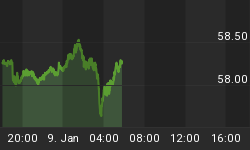Most Americans own a 401(k) as the pillar of their retirement saving strategy.
Let’s kick off this discussion on a high note: 401(k) participants have generally stayed the course through the financial crisis and economic recession. In 2020, there were about 600,000 401(k) plans, with about 60 million active participants and millions of former employees and retirees with most participants maintaining their asset allocations. An analysis of more than 30 million DC accounts in 2020 found that whereas 10.6% changed the asset allocation of their account balances and another 6.3% changed the asset allocation of new contributions in 2020, just 2.3% of participants stopped contributing altogether.
So far, so good. But now the million-dollar question: How well has your 401(k) been performing from an investment perspective? Retirement planners typically suggest an average annual return of 5% to 8% as a sweet spot for the average 401(k) based on market conditions.
That’s a pretty low bar considering the S&P 500 has yielded an annualized average return of around 10% since its inception and around 7% after adjusting for inflation.
If the answer to that question is not so well, then you might want to investigate whether something called revenue sharing is to blame for your lagging portfolio.
According to a recently published paper, recordkeepers in defined contribution pension plans are often paid indirectly in the form of revenue sharing from third-party funds on a plan’s menu.
The researchers, Veronika Pool, professor at the Vanderbilt University, Irina Stefanescu, an economist at the Board of Governors of the Federal Reserve System, and Clemens Sialm, a professor the University of Texas at Austin have demonstrated that these arrangements do affect the investment menu of 401(k) plans.
In effect, the paper says, your 401(k) plan could be saddled with poorly performing or expensive mutual funds because revenue-sharing funds are more likely to be added to the available investment options and are less likely to be removed.
About 66 percent of 401(k) plan assets were held in mutual funds as of the end of December 2020 with the remainder of 401(k) plan assets held in individual stocks and bonds, company stock (stock of the employer), bank collective trusts, guaranteed investment contracts (GICs), life insurance separate accounts, and other pooled investment products.
Revenue sharing
Against a backdrop of a growing number of lawsuits that allege that fiduciaries breached their duties by allowing excessive plan fees to be paid from plan assets, many plan sponsors have started reviewing their plan’s fees, with revenue sharing arrangements being singled out as a major culprit.
Revenue sharing typically refers to the compensation plan recordkeepers and service providers receive from mutual fund companies, investment managers, and affiliates in exchange for assuming part of the mutual fund company’s administrative functions. For example, the recordkeeper could track share ownership of each fund for each plan participant in a participant-directed plan and in return receive a portion of the fees the fund company charges to individual investors. These fees add up to a fund’s expense ratio.
Many employees might not even be aware of these ‘hidden’ fees considering that studies have shown that as many as 71% of 401(k) holders aren’t aware that they pay fees to their plan providers to maintain their account.
Yet, annual fees have a great impact on your 401(k).
Assuming you’re 35 years away from your target retirement age and you were to contribute $5,000 every year to your account with an annual return of 7%, you would accumulate $469,000 at the end of your target period assuming zero fee is charged on your account. On the other hand, a 1.5% annual fee would set you back a good $124,000 by your target retirement age.
What to do
Luckily, you are not without recourse here.
The Employee Retirement Income Security Act (ERISA) of 1974 has, as a primary requirement, that service providers give upfront “fee notice” to plan clients. That fee notice spells out the various types of direct or indirect compensation payable to the provider. Generally, plan participants are supposed to receive 404(a)(5) disclosure documents annually.
Unfortunately, few people ever read those fee disclosures.
According to Bonnie Yam, a principal with Pension Maxima Investment Advisory, 401(k) plan participants should first review their 404(a)(5) fee disclosure document to get a clear view of the breakdown of the fees on plan administrative side and on an individual basis (i.e., fees for distribution, loan administration, etc.)
Yam advises to be on the lookout for any language describing revenue sharing and how it is utilized: offsetting other fees, rebated back to you, etc.
Some large employers have professionals on staff to explain the fee disclosure documents to employees; otherwise, your employer is obligated to provide this disclosure which many do by referring you to professionals employed by their recordkeeper.
If your employee benefits department is unable to tell you the exact amount of recordkeeping, take that as a red flag, says CAPTRUST’s Mike Webb.
In plans where there is a zero-revenue share target-date fund (TDF), Webb recommends checking out the performance of that fund versus your self-selected investment portfolio net of investment fees over long time horizons.
Most online recordkeeper portals allow participants to display the customized rate of return of their own portfolio for at least a year, making this task an easy one.
And, if the performance of the TDF is the same or better, switch to the TDF.
If your plan lacks a revenue-share-free TDF but you wish to self-select investments, look for revenue share-free options in the asset classes in which you wish to invest. Compare the longest-term performance available--net of fees--of the revenue sharing vs. zero-revenue sharing option, and select the one with the superior performance.

















